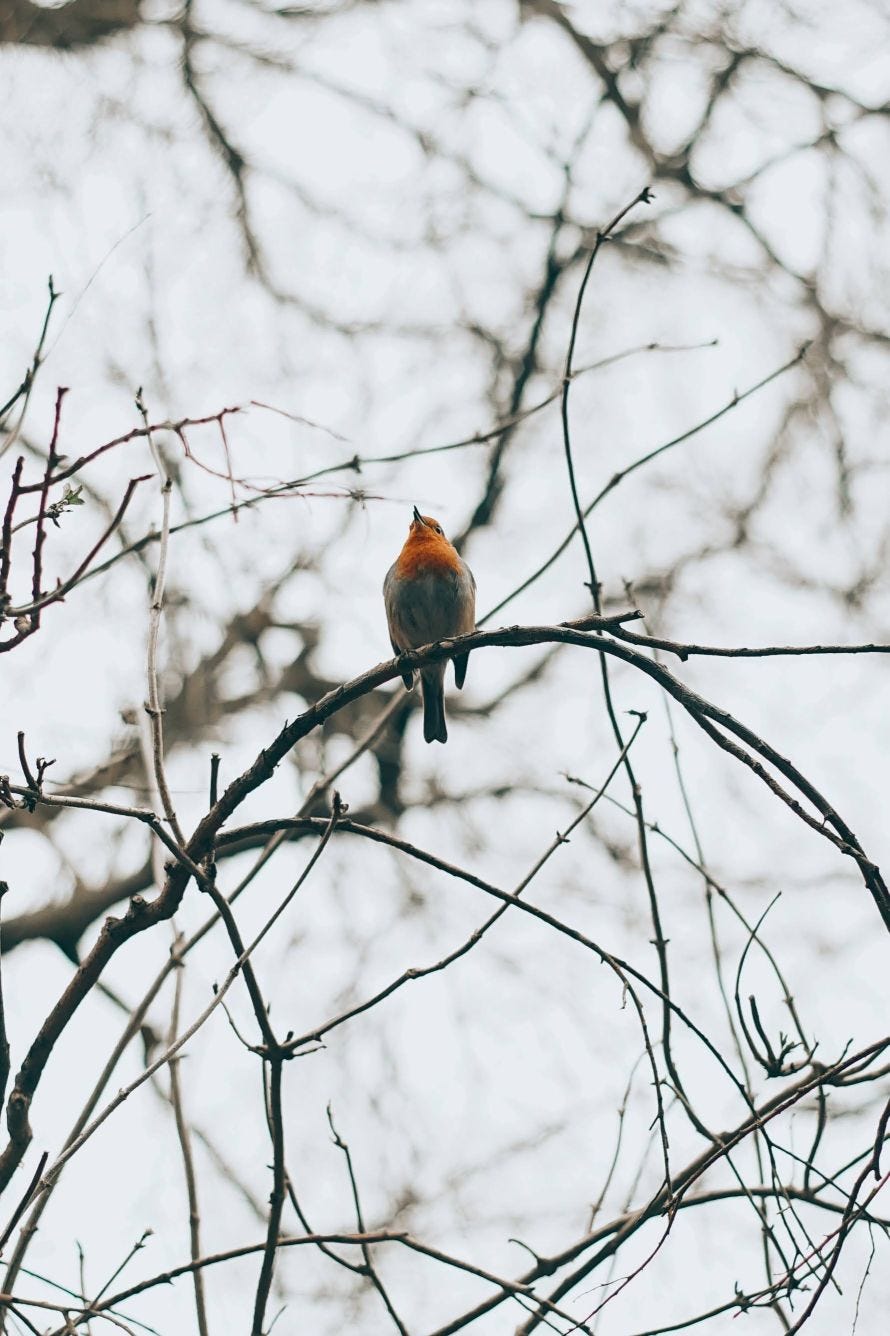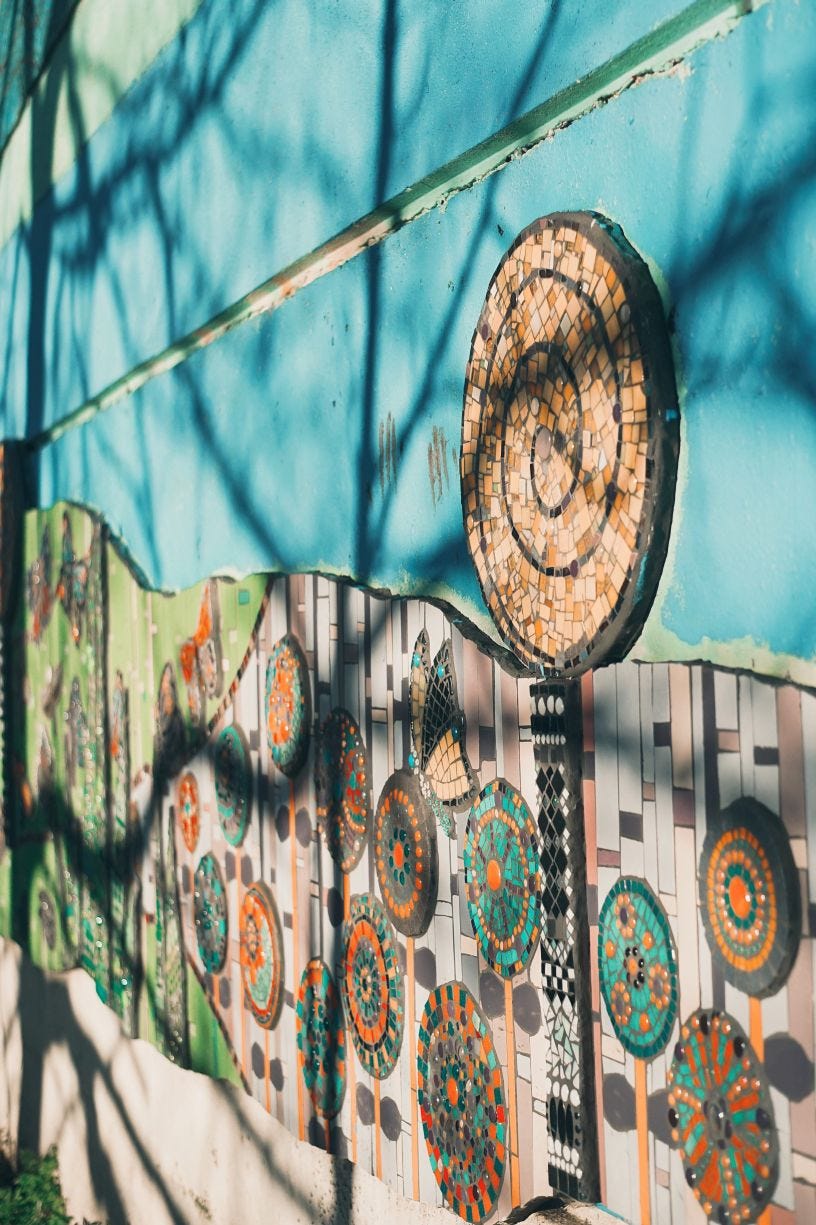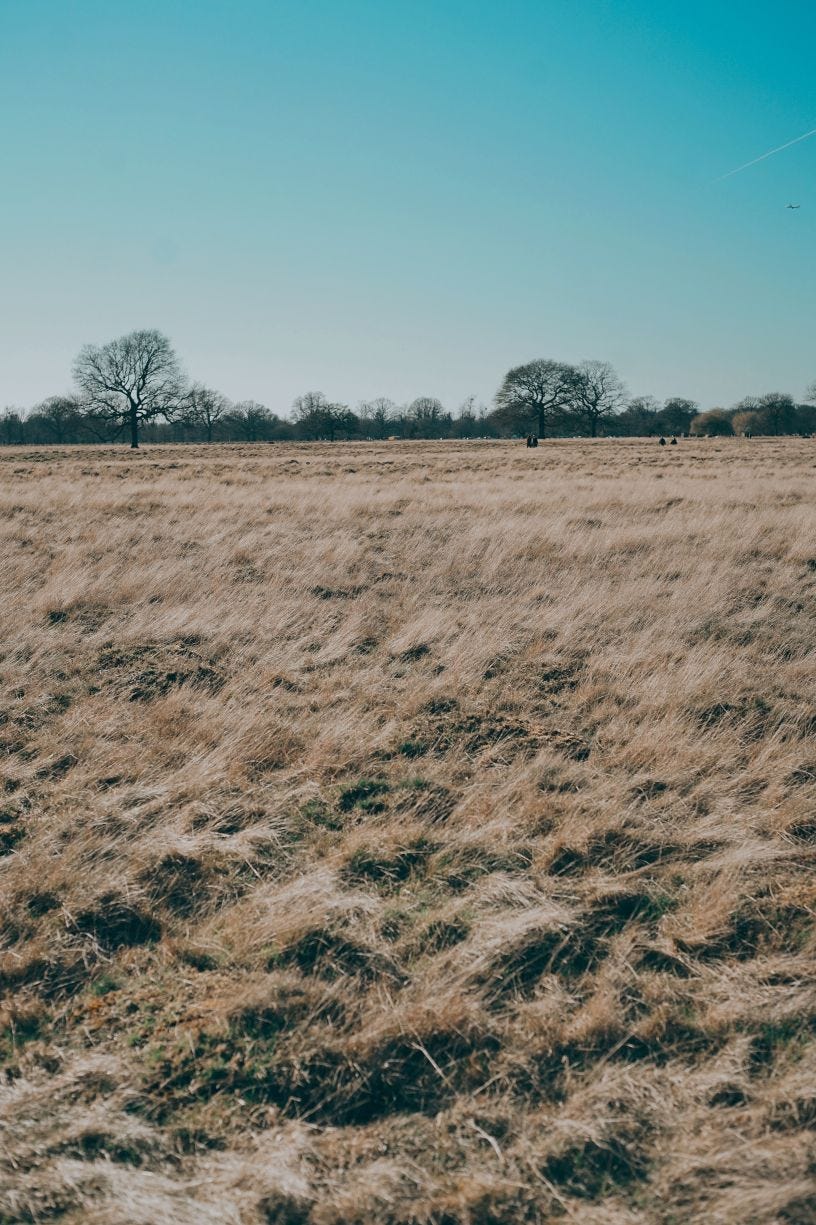Have you ever wondered whether it is the right thing to go completely silent? I know I have worried about just that far too often—and it almost always seemed more elegant to be au courant without saying, or often doing anything. Yes, bombs kept falling, human rights were being violated, middle-class guilt kept amassing, but hey, the disengaged person is an elegant person. “Cum tacent, clamant,” by their silence they shout out loud—I used to live by that motto. However, this time, I decided to write myself to the other side. Unapologetically. Welcome to an all-new edition of enda lettere, a newsletter for readers in pursuit of stillness, not silence.
❁
Blooming Like Winter is my year-long exercise in looking closer and being more present. This series follows along the traditional 24 seasons of the old Japanese calendar. If you wonder what the hell that is, why 24 seasons, start with the introductory essay.
❁
“People change, but the season stays
Nothing feels real”(Foreign Air)
The second season of spring is 雨水 (usui, literally meaning rainwater). The name refers to thaw, snow melting, and the often seamless transition from snow showers to abundant spring rain. Time does not feel fecund at all. Nature is nothing like jubilant. Spring in its infancy conjures terrifying images of the newborn gnawing on the flesh of the old, struggling.
Slow, cold rain soaks a gray pointillist landscape. On some mornings, the wrens remain silent. The next day a storm comes. That’s the troubled childhood of spring. There is still doubt whether the child survives—these weeks certainly feel like the agony of winter will continue.
Mosaic
There are more hopeful days than others. I feel like I can trace the contours of peace in the afternoon spent walking along the Hogsmill River, looking for the exact spot John Everett Millais had chosen for the backdrop of his painting Ophelia. The river itself, covered in rotting grasses and the grand carcasses of century-old weeping willows trickles towards the Saxon Coronation Stone, where it’ll meet the Thames. Instead of a carpet of flowers, as seen in the painting, a carpet of rubbish lines the Hogsmill’s banks.
But then there is the mosaic. A 15-meter long whimsical woodland scene, complete with butterflies, caterpillars, a fox, a parliament of owls, and a flock of songbirds under a victorious sun and a shimmering moon. The work of 1,000 volunteers and local artist Kim Porrelli, the mosaic occupies the pylons of a highway bridge near Malden Manor, where Millais, who only painted after nature, often visited to seek inspiration.
The afternoon light plays a hyperrealist game by illuminating the birds and flowers and casting a shadow over the moon and the creatures of the night.
Storm
Thunder wakes me. For a moment, balancing on the edge of the waking world, I contemplate the source of the noise. It seems to me that I can reach up and over the hill to see the city beyond the railroad tracks. It is thunder. And then, silence.
A deep rumble rises from beneath the ground—I recognize it as the wind rising, somehow wind rips through the soil here, but now the entire house trembles.
As a child, I used to imagine vast armies fighting a bitter war of the heavens. On the strange day when it snows, rains, and sunny spells drive the pitch-black clouds away, I don’t have to imagine anymore.
In the eye of the storm, there is an eery stillness point, movement and destruction suspended in a dirty white light.
Weald/Mud
The storms finally pass after ten days. It is time to walk out into the High Weald, this ancient, once endless forest of lore and legend.
Southwards and seawards I walk between stretches of barbed wire, in ankle-deep mud. 雨水 or rainwater should describe the early spring phenomenon of heaven and earth swelling with water like a sponge.
It freezes over at night, and I wake to a world covered in pearlescent mist, the flysheet of my tent frozen solid.
Train
“But why do the Russians do it?” the boy asks.
“Maybe they wanna nuke everyone” his younger brother opines to fill the silence. Mom and Dad are glued to their phones, the elder sister keeps staring out the window.
“But really, why do the Russians do it?” the boy insists. “Are they gonna go on, bomb the next country and the next?”
Dad grunts dismissively.
“Are the Russians gonna come for England?”
“They don’t need to come, they can just nuke everyone.” the younger brother chimes in again.
“But in Ukraine, is there school? Do the children go to school now or do they get to stay home?”
“I bet they don’t need to go. I mean, there are the bombs.”
“Baah. I don’t wanna go to school. But the children in Ukraine, are they gone hiding? In basements and such? And…why do the Russians do it?”
There is no answer. The next station is Strawberry Hill.
Skylark Conservation Area
The look of the grassy knolls reminds me of the sea. Beige-blonde in the perpetual late afternoon light, ruffled by a viciously cold breeze. But change the perspective, and from far enough, the landscape turns into a miniature airstrip as the broad paths divide the grassland into sectors. This is where the skylark dwells, in the middle of Bushy Park.
The skylark is a stone thrown high up in the sunset sky: in its flight, it turns into a bird, its breathless song an offering to the heavens. Ever heavenward, ever in search of other realms, singing ceaselessly throughout its ascent, the skylark is enshrouded in heavy symbolism. One has to tread carefully here, in meadow-turned-golden-sea, for many great poets went before me and did what poets do best.
Symbolism aside (that had been explored and explained in Thomas C. Gannon’s splendid book Skylark Meets Meadowlark1), the song-flight of the skylark is strangely out of place. This is summer song. To hear it on a cold Sunday afternoon is to hear a faint echo ringing through the seasons, hearkening back to the weird, sizzling hot days spent in Hampshire and Sussex, walking the downs. The song-flight should fill a vast, empty sky instead of the neat reality of a fenced-off park.
I yearn for the vast, empty sky filled with warmth.
❁
For a while, I’ll leave the English countryside, so there will be a change of scenery in the third season. There is a longer walk happening fairly soon, but I’ll let you know when (and where) enda lettere returns to its original format, that of a field diary. Until then, do share this newsletter with your friends and foes!
available at Nebraska Press







So glad to hear from you, Nora! I was thinking the other day that I've been missing your writing and I was wondering how you were with everything going on. Sending you love and light! Can't wait to see where you're heading!